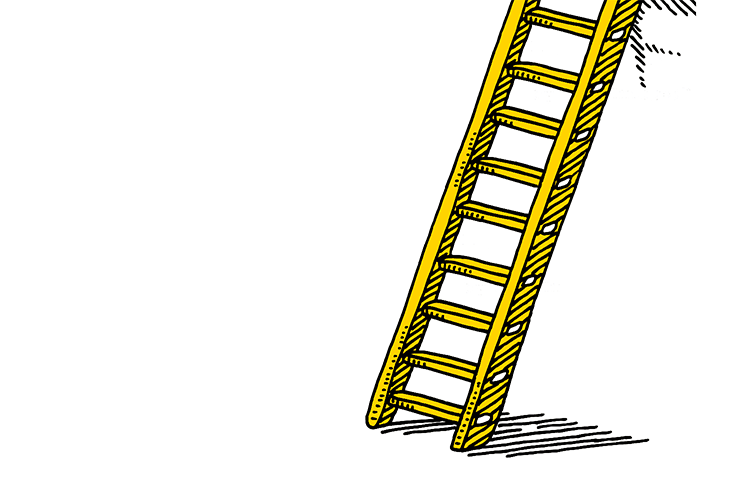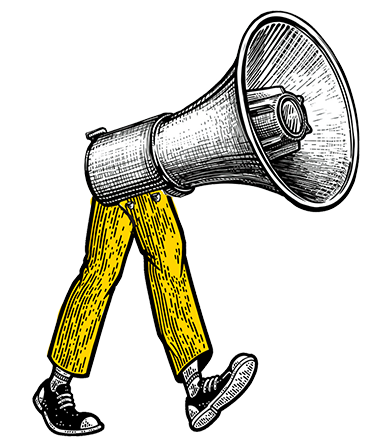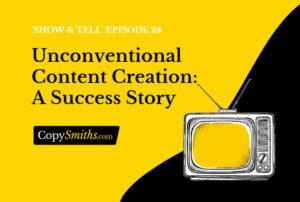Home » Content Marketing » Make Your Listicle Rank Higher on Google: 3 Less-Known Tactics

Make Your Listicle Rank Higher on Google: 3 Less-Known Tactics
Listicles are everywhere. The internet is filled with “X Way to do Y” and “X best Y” articles.
With so many listicles on every topic you can think of, it’s hard to stand out. And yet that’s every writer’s goal: to rank at the top of Google search results and get more traffic.
Listicles are used to provide quick information to online users looking for content. They can be long articles, but they’re also a popular form of micro-content.
Yours need to be easily and instantly accessible to your readers.
Here are three key and yet lesser-known tactics that will make your listicles rank higher.
1: Track Your Metrics Here
Many writers will create listicles, publish them, and then move on to the next piece of content. They’ll hope that the listicle does well and ranks highly, but forget to analyze its key metrics.
You need to see what’s working so that you can capitalize on that and ensure future content ranks well. To do so, you need to carefully look at the organic traffic your site is generating.
One great tool you can use to analyze your traffic is SERP Scan. This provides you with the keywords that brought organic traffic to your site over the past year. This way, you can create more content around those specific terms and keep traffic coming.
You should also keep an eye on your bounce rate. Are readers leaving your site after having read your one listicle?
If that’s the case, then you may consider adding more internal links to your listicles. That way readers can see what other content you have, but more importantly, so can Google.
If readers spend a long time on your site, it tells Google that you have content people are looking for. This leads to Google ranking your content at the top of its search results for others to find.
Another wonderful thing about Google is that if it sees that you have a lot of content, it will rank you highly. The more internal links you provide in one piece of content, the likelier you are to appear in top searches.
One tool you can use to track the bounce rate is provided by Google itself: Google Analytics.
Here you can find the percentage of users who leave after quickly interacting with your site.
Google Analytics considers an interaction as a user visiting at least one of your pages before leaving.
2: Use Visual Content
The more relevant and engaging content is to your audience, the more favorable it is to Google. And there’s no more engaging type of content than visual content.
Your listicle should always include visuals because:
- Your competitors use them to captivate readers in their listicles and you shouldn’t be left out.
- They convey more information in less time than any other content medium. And, in today’s world where attention spans only last 8 seconds, it pays to provide information fast.
- Visual content is more memorable to your audience, helping them retain information longer. This makes your listicle more useful.
- They keep your audience on your site for longer periods of time. Your readers are more likely to pay attention to visuals than text. This means they’ll take the time needed to understand visuals than skim through the text.
- Visuals you create can appear on other sites, generating backlinks to your content. This not only shows that your content is relevant and that you have expertise on a topic.
These all make a good impression on Google’s algorithm, ensuring that your listicle ranks highly. You should also remember to optimize your visual content so that Google notices it.
Different types of visuals can be optimized in different ways, such as:
- Adding meta descriptions, titles, description tags, and alt tags to images. Include the relevant keywords in your tags.
- Including keywords in the titles of infographics. Consider infographics the same way you would images and don’t forget to add metadata.
- Creating high-quality videos and coming up with keyword-optimized titles.
3: Make It Mobile-Friendly
Many online users will search for content on their mobile devices. In fact, according to Statista, 60% of Google searches were conducted on mobile devices in 2019.
It’s therefore crucial for your listicle to be mobile-friendly. The simpler and better your content is to comprehend on mobile devices, the more useful it is.
For your listicle to be easy to read, you can follow these tips:
Apply the Bite, Snack, Meal Approach
Some of your readers will quickly go through your list, while others will carefully read every bit of it. It’s best to create a listicle that appeals to everyone.
Using the bite, snack, and meal technique allows you to do just that as these are all different elements:
- Bite: This is all about your headline. Its primary goal is to attract the interest of your target audience. Many people don’t go past the headline, so pique their interest with a captivating headline. Make them want to know more.
- Snack: This involves your listicle’s summary, introduction, or conclusion. It’s where your readers learn what your piece of content is about. This element should be short, yet concise enough to provide the necessary information.
- Meal: This is your content as a whole. It’s what you want your readers to read in its entirety. This is what the bite and snack should lead to.
Structure Your Listicle
Mobile device screens are a lot smaller than laptop or desktop screens. Hence the need to structure your listicle in small, easy o read parts throughout your post.
You can correctly structure your listicle by:
- Adding whitespace in your content.
- Writing short paragraphs for each new idea and topic.
- Using subheadings to clearly distinguish different parts.
- Writing a summary that stands out.
- Using bullet points multiple times in your listicle.
- Applying bold and/or italic formats to key terms or phrases you want to emphasize.
Keep Your Title and Words Short
Short titles are mobile-friendly because they’re easy to read on search results. You want your entire headline visible to readers so as to better captivate them.
CoSchedule suggests that headlines with 6 or 7 words perform best and drive the most traffic. You can see whether your title fits with CoSchedule’s headline analyzer.
This tool tells you whether your headline is the right length in terms of words and characters. Ideally, you want to keep your title to 55 characters or less.
It’s also important to keep the words and phrases in your content short and simple. You want the reader’s experience to be as smooth as possible on their mobile device.
To check whether your listicle is easy to read, you can run your content through the Hemingway App. this shows you whether:
- Your sentences are too wordy and need to be shortened.
- Your words are too complicated and need to be replaced.
To find better words, use the Thesaurus website. You’ll get synonyms for your complicated words which you’ll then replace in your content.
CopySmiths
I'm Katrina McKinnon, founder of CopySmiths and Small Revolution. In my 20 years of experience, I have helped online businesses create high-performing content specifically on an eCommerce store's blog. Find me on LinkedIn and Twitter.

CopySmiths offers the best blog writing services for online stores.
If you'd like us to write blog articles for you, click here.
Most Recent
- 3 Bold Questions You Should Ask When Hiring A Content Writer

- 5 Practical Reasons You Should Use a Blog Post Template

- 4 Amazing Benefits of Using a Title Generator for New eCommerce Blogs

- 10 Awesome Bio Examples Your Online Store Blog Should Emulate

- 8 Basic Steps to Successful Content Development Every Time

Podcasts
Got a question?
Ask our friendly team about our article writing services.
Subscribe to CopyZine
Monthly, hand-picked stories of the best in eCommerce Content.




